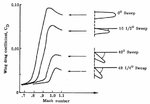- Thread starter
- #121
30,000 feet or higher. The P-47 is often described as being suprisingly nimble and agile at very high alts thx to it's high wing loading and supracharged big engine. Nothing specific though. The website I linked a few pages back described it as "suprisingly nimble" for a plane it's weight and size but didn't suggest it was "more" nimble or agile than a FW or Bf at similar altitudes.
Then again, the Bf-109K was described by the flight simm website i linked as also having high speed handling issues due to it having a sup'd up HP engine mated to an aging airframe.
Then again, the Bf-109K was described by the flight simm website i linked as also having high speed handling issues due to it having a sup'd up HP engine mated to an aging airframe.




